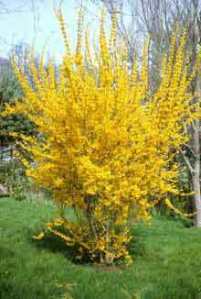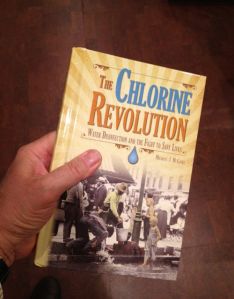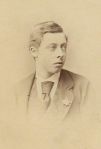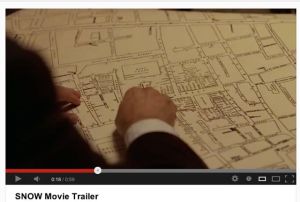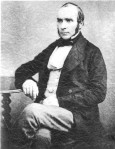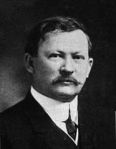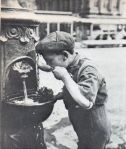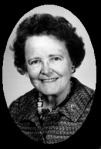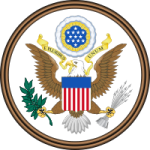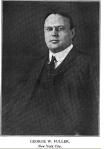By Peter Vinten-Johansen
 If I were still teaching a history of medicine course at Michigan State University, I would have prepared a mini-lecture on John Snow for mid-March. The syllabus would have included a series of readings by and about Snow, selected to show why the opening paragraph on the home page of the John Snow Archive and Research Companion reads:
If I were still teaching a history of medicine course at Michigan State University, I would have prepared a mini-lecture on John Snow for mid-March. The syllabus would have included a series of readings by and about Snow, selected to show why the opening paragraph on the home page of the John Snow Archive and Research Companion reads:
“John Snow’s contributions during the early years of inhalation anesthesia, and his investigations during two mid–century cholera epidemics in Victorian London, are landmarks in anesthesiology, epidemiology, medical cartography, and public health.”
On entering the classroom, the students would see two items projected onto screens at the front of the room: the epimonitor listing of special events commemorating the 200th anniversary of Snow’s birth (http://epimonitor.net/Snow_200th_Birthday_Events.htm); and a name, Frank Pembleton, followed by a short quotation, “It’s our job to speak for those who can no longer speak for themselves.”
In March 2013, I would have to explain that Pembleton was a fictional detective in the television series, Homicide: Life on the Street, that aired during the 1990s; that the quotation was Pembleton’s raison d’tre; and that while I had no desire to rain on any of the events planned to honor John Snow this year, I very much feared that this plain-spoken and forthright man, who certainly expected what he thought was his due but no more, would be embarrassed if any honorifics came by way of demeaning his contemporaries and over-, or misstating, his accomplishments.
For that’s happened all too often since Snow’s death in 1858. Benjamin Ward Richardson, his ostensible champion, was among the first to do so in his depiction of the Broad Street pump episode during the 1854 London cholera epidemic:
“He had fixed his attention on the Broad-street pump as the source and centre of the calamity. He advised the removal of the pump-handle as the grand prescription. The vestry was incredulous, but had the good sense to carry out the advice. The pump-handle was removed, and the plague was stayed. There arose hereupon much discussion amongst the learned, much sneering and jeering even; for the pump-handle removal was a fact too great for the abstruse science men who wanted to discover the cause of a great natural phenomenon in some overwhelming scientific problem. But it matters little. Men with great thoughts in their heads, think of little things which little men cover with their wide-spread feet. It matters little, for the plague was stayed . . .” (http://johnsnow.matrix.msu.edu/work.php?id=15-78-43, page xxi)
In 1866, when cholera again visited the London metropolis, Edwin Lankester, the driving force behind the creation of a parish committee to inquire into the horrific local outbreak of 1854, inserted a lightly redacted, Richardson-version of Snow’s doings for a popular pamphlet on the nature of the disease and its prevention:
“Of all the means by which this poison may be conveyed, that by water seems the most constant and the most dangerous. This mode [30/31] of conveyance was so novel, that when first suggested it was almost universally opposed. Medical men had really no experience of any contagious diseases that could be conveyed in this way, and were incredulous as to the fact. . . . The most gigantic case of this kind which has ever appeared in the history of epidemic cholera, is that which occurred in the [32/33] months of August and September, 1854, in the parish of St. James, Westminster. . . . On the 1st of September [sic; should be the 7th] the Board of Guardians met to consult as to what ought to be done. Of that meeting the late Dr. Snow demanded an audience. He was admitted, and gave it as his opinion that the pump in Broad-street, and the pump alone, was the cause of all the pestilence. He was not believed–not a member of his own profession, not an individual [34/35] in the parish believed that Dr. Snow was right. But the pump was closed, nevertheless, and the plague was stayed. . .” (http://johnsnow.matrix.msu.edu/work.php?id=15-78-FA)
These two chaps knew how to rewrite back-stories. Richardson never jeered at Snow’s theory, but he was among those who sneered at Snow’s insistence that cholera communication was limited to the oral-fecal route. In an 1855 review of MCC2, among other writings on cholera, Richardson concluded that:
“Dr. Snow and his objectors are both right in the main; and that while the specific poison of cholera (for we must presume the existence of such a poison, though we may not understand its nature), may, by accident, be carried into the intestinal canal by the medium of water, it may also be wafted into the lungs by the medium of the air. Many of Dr. Snow’s objectors would, we doubt not, join us in this view of the case; which is more than we could expect from him, since it is opposed to his essential idea . . .” (http://johnsnow.matrix.msu.edu/work.php?id=15-78-14B)
Lankester was either careless or opportunistic, perhaps both. Careless if he mis-wrote the date of the meeting whilst essentially plagiarizing the rest of Richardson’s passage; opportunistic if he intentionally wrote 1 September since as chair of the sub-committee that drafted the parish report, he knew that the outbreak had peaked on September 2; posing an earlier date for Snow’s meeting would exonerate Richardson and help Lankester make the case that shallow wells like that under the Broad Street pump should be permanently eliminated due to extensive contamination from sewage and surface run-off. (http://johnsnow.matrix.msu.edu/work.php?id=15-78-AA , page 23)
It’s quite likely that Henry Whitehead had Lankester in mind, perhaps Richardson as well, when he began a talk at the Epidemiological Society of London on 6 May 1867 as follows:
“It is commonly supposed, and sometimes asserted even at meetings of Medical Societies, that the Broad Street outbreak of cholera in 1854 was arrested in mid-career by the closing of the pump in that street. That this is a mistake is sufficiently shown by the following table, which, though incomplete, proves that the outbreak had already reached its climax, and had been steadily on the decline for several days before the pump-handle was removed.” (http://johnsnow.matrix.msu.edu/work.php?id=15-78-82)
Whitehead’s table contained figures slightly different from those in Lankester and Co.’s parish report, but the pattern is identical. Whitehead, also a committee member from the get-go in November 1854, may have had his own criteria for establishing fatal attacks. As did John Snow, added to the committee several weeks later after presenting the results of his on-going investigation, which was later added to the general report under the title, “Dr. Snow’s Report.” After presenting his own table of fatal attacks and deaths in August and September 1854, Snow wrote: “It will be observed that the daily number of fatal attacks was already much diminished by September the 8th, the day when the handle of the pump in Broad Street was removed” (http://johnsnow.matrix.msu.edu/work.php?id=15-78-55, page 118).
He was even more explicit in MCC2: “On September the 8th–the day when the handle of the pump was removed–there were twelve attacks; on the 9th, eleven; on the 10th, five; on the 11th, five; on the 12th, only one; and after this time, there were never more than four attacks on one day” (http://johnsnow.matrix.msu.edu/work.php?id=15-78-52 , 51). And lest one wonders if Richardson and Lankester had found confirmatory evidence for their canard in Snow’s only other published discussion of the Broad Street pump episode, he wrote the following in a letter to the Editor of Medical Times and Gazette: “I had an interview with the Board of Guardians of St. James’s parish, on the evening of the 7th inst., and represented the above circumstances to them. In consequence of what I said, the handle of the pump was removed on the following day. The number of attacks of cholera had been diminished before this measure was adopted.” (http://johnsnow.matrix.msu.edu/work.php?id=15-78-45 , 23 September 1854) Disabling the Broad Street pump undoubtedly prevented a follow-up outbreak, but no one has ever presented evidence that it had an impact on the trajectory of the “plague” as claimed by Richardson and Lankester.
But Whitehead’s corrective did not take. Ninety years later, Bradford Hill felt compelled to say that
“…it is necessary in this centenary year [since the original publication of MCC2] once more to point out that Snow’s claim to fame does not rest upon the removal of a pump handle and a post hoc propter hoc argument which he would, I believe, have despised. Yet that belief is still widespread. It may well have its origin in Sir Benjamin Ward Richardson’s fine memoir of Snow . . . . [Hill quotes part of the same passage I do above, concluding with “the plague was stayed.”] It is difficult to resist the final dramatic touch; it is almost sacrilege to attempt to de-bunk it. Yet perhaps it is fair in a centenary year to see what Snow himself wrote [and Hill then quotes from MCC2].”
The final sentence in the quotation above gives me away. I got the notion of Snow’s embarrassment at false honorifics from Hill, as well as using Snow’s own writings to try to debunk myths about him. I doubt, however, if I’ll be any more successful than Whitehead and Hill have been. We seem to have a need to create and cherish myths for a variety of reasons, personal and professional. Richardson’s pump-handle tale has remarkable staying power, perhaps due in part to the fact that for many decades Snow’s version was only popularly available in Wade Hampton Frost’s reprint of MCC2, which also included an abbreviated form of Richardson’s memoir containing the passage quoted above. So much easier to read a short biographical memoir than wade through Snow’s closely argued pages. Perhaps I’m just a belly-aching codger and should let this go, for I do understand that the myth advances constructive action in epidemiology and public health. I just wish we could come up with a story, fairer to all concerned, that expresses what is unquestionably heroic about Snow’s recommendation and the parish Sanitary Committee’s decision to disable the Broad Street pump: caution should be the decisive factor when the public’s health is at issue, even when causes are unknown and the evidence probabilistic.
Repeat a tale often enough over time and it may become the default explanation, trumping anything else at odds with it. For example, in October 2010 Joe Palca introduced a segment of National Public Radio’s “Science Friday” in the following manner:
“Over 600 people died of cholera in London during the outbreak of 1854, and it was a pretty mysterious disease back then. The prevailing medical theory of the day blamed it on contaminated vapors, but the English physician, John Snow, had his own theory. To prove it he mapped out the cholera deaths during the outbreak, and he noticed that many of the deaths were concentrated around one particular water pump on Broad Street. Snow recommended disabling the pump; and sure enough, the outbreak was contained, so they knew it had something to do with water.”
The Science Friday home page for that episode included three sources on which the segment was based, including Steven Johnson’s Ghost Map.
Johnson, however, says nothing of the kind. I should add that he sent me an advanced draft of the book for comments since he relied so heavily on the Snow biography I co-authored, Cholera, Chloroform, and the Science of Medicine (CC&SoM) We were in agreement from the outset that Snow never said that removing the pump handle had “contained” or “stayed” the Broad Street outbreak. On the contrary, Johnson states explicitly that cholera mortality began dropping dramatically several days before the handle was removed (155), in agreement with what Snow had written, Whitehead and Bradford Hill repeated, and we set forth in the Snow biography. Palca is a fine journalist. He does his homework. What happened? Was the dramatic flourish of the oft-told tale so much more appealing than the banal uncertainty described by Snow?
Palca’s comment contains a second myth about the Broad Street outbreak which isn’t attributable to Richardson or Lankester – that mapping was part of Snow’s initial investigation during the first week of September. John Noble Wilford had written much the same in 2008: “A turning point in prevention [of cholera] came in 1854, when a London physician, Dr. John Snow, established the connection between contaminated water and cholera. Dr. Snow tested the idea by plotting cholera cases on a map . . . This showed that most of the victims drew their water from a public pump on Broad (now Broadwick) Street.” A recent book, ‘Ghost Map,’ by Steven Johnson, recounts the discovery” (“Plague: How cholera helped shape New York,” New York Times (15 April 2008): D4).
Not exactly. Johnson said that “John Snow began working on his first map of the Broad Street outbreak sometime in the early fall of 1854. Its initial form . . . [was first shown] in December . . .” (193). In September 1854, Johnson only depicted Snow as “imagining the paths residents might take” (136), “drawing maps” in his mind (141), and “he drew maps in his head, looking for patterns, looking for clues” (149). Why such a significant disconnect between Wilford’s assertion and the source he gives? Wilford knows his stuff; I always learn something from anything in the NYT with his byline. The article on cholera is no exception. This is only the second time I have encountered the notion that Snow had mapped the results of his inquiries about drinking habits of the 83 victims on the list he compiled at the General Register Office (GRO) on 5 September.
The first was Sandra Hempel, whose account (2007) anticipates both Palca and Wilford. Her version is that after making the list at the GRO, Snow
“. . .marked the deaths, house by house, on a street plan, a line for each fatality. And as he did so, a distinct pattern began to emerge. . . both figuratively on the map and physically in Broad Street, right at the heart of the outbreak . . . . Five of the ten victims’ families told Snow that their relative had preferred the water from Broad Street and always used that pump. . . . Setting aside those victims who drank the Broad Street water even though the pump was not the nearest to their homes, the map clearly showed that the deaths had either plummeted or stopped altogether at every point where it was easier to go to another pump . . . . So on the evening of Thursday, 7 September, he made his way to the Vestry Hall in Piccadilly . . .” (The Strange Case of the Broad Street Pump, 212-18)
Hempel uses quotation marks in the text but does not provide footnotes. She does have a listing of sources used in each chapter, but specifics in the passage from chapter 13 excerpted above come from MCC2 [Snow, John. 1855. On the Mode of Communication of Cholera. 2nd ed. London:Churchill.], listed for a previous chapter. Hempel zeroes in, appropriately, on Snow’s discussion of the 83 addresses he received from the GRO (MCC2, 39-40). But then her text jumps over the two paragraphs on page 40 (of MCC2) containing Snow’s conclusion and his interview with parish officials, cherry-picks confirmatory evidence Snow had garnered during multiple re-investigations later in the fall (http://johnsnow.matrix.msu.edu/BrStP-MCC2-CIC.pdf), selectively quotes and paraphrases Snow’s discussion of streetscapes in relation to his spot map that begins on page 45, and quotes from an expanded conclusion on page 54, before concluding this chapter by doubling back to the interview paragraph on page 40.
If one accepts Hempel rendition of events, Snow accomplished a herculean feat in two days of inquiries and presented the following findings at his meeting with parish authorities on the evening of 7 September: an account of the drinking habits of 77 of 83 cholera victims; an explanation for why an army officer from St. John’s Wood had died after dining in Wardour Street; how the distinguished ornithologist, John Gould, had dodged the cholera because freshly drawn water from the Broad Street pump had a dodgy odor; why there was so little cholera in the parish workhouse and the Lion Brewery; and how the Hampstead widow had succumbed after drinking Broad Street water taken from the pump on 31 August. The latter is especially impressive since the death of the Hampstead widow on 2 September was not published until almost a week after Snow’s interview, when it was called to his attention by a colleague and its significance still had to be run to ground.
Snow’s account is quite different:
“I made inquiry in detail, respecting the eighty-three deaths registered as having taken place during the last three days of the week.
On proceeding to the spot, I found that nearly all the deaths had taken place within a short distance of the pump. There were only ten deaths in houses situated decidedly nearer to another street pump. In five of these cases the families of the deceased persons informed me [39/40] that they always sent to the pump in Broad Street, as they preferred the water to that of the pump which was nearer. In three other cases, the deceased were children who went to school near the pump in Broad Street. Two of them were known to drink the water; and the parents of the third think it probable that it did so. The other two deaths, beyond the district which this pump supplies, represent only the amount of mortality from cholera that was occurring before the irruption took place.
With regard to the deaths occurring in the locality belonging to the pump, there were sixty-one instances in which I was informed that the deceased persons used to drink the pump-water from Broad Street, either constantly or occasionally. In six instances I could get no information, owing to the death or departure of every one connected with the deceased individuals; and in six cases I was informed that the deceased persons did not drink the pump-water before their illness.
The result of the inquiry then was, that there had been no particular outbreak or increase of cholera, in this part of London, except among the persons who were in the habit of drinking the water of the above-mentioned pump-well.
I had an interview with the Board of Guardians of St. James’s parish, on the evening of Thursday, 7th September, and represented the above circumstances to them. In consequence of what I said, the handle of the pump was removed on the following day.” (MCC2, 39-40)
No mention of a map. He knew the area well since it was the catchment area of his general practice for ten years before specialization in anesthesia regularly took him to distant parts of the London metropolis. As I re-read Snow’s paragraphs, Steven Johnson’s evocative image comes to mind: When Snow came to the cholera field with GRO addresses in hand, “he drew maps in his head, look[ed] for patterns, look[ed]for clues,” “imagining the paths residents might take” to fetch their drinking water. Actually, that was all anyone could have done under the circumstances.
For the simple fact of the matter is that no publicly accessible frontage plan containing individual house numbers on each street existed for this part of Westminster in early September 1854. The most recent map available with such detail was the 1819 edition of Richard Horwood’s Plan of the Cities of London and Westminster, the Borough of Southwark, and Parts Adjoining (I consulted a microfilm of this edition at the City of Westminster Archives Centre; the 1792-99 edition is available on the Motco web site). At 26 inches to the mile, the full map included thirty-two sheets. Even if Snow possessed Sheet B2, which included streets west of Dean Street and Soho Square, street and building renovations in the decades after1819 would have rendered most of it useless for anyone searching for specific addresses in what constituted the Broad Street cholera field of 1854. George Thompson’s 1825 Plan of the Parish of St. James, Westminster (SC/GL/FLM/022/1825/K1290810, housed at the London Metropolitan Archives) is a huge, folded velum map, containing very few house numbers; it would have been of no use to a shoe-leather epidemiologist. Since the Metropolitan Commission of Sewers (MCS) had an updated frontage plan (MCS/PR/036; see http://johnsnow.matrix.msu.edu/work.php?id=15-78-7E ) produced to accompany the report into the outbreak by their engineer, Edmund Cooper, which appeared the third week of September 1854, I wondered if Snow could have popped into the MCS office on Greek Street earlier to obtain a blank copy for his personal use. But there is no record of such a plan in the MCS archives; Cooper’s map was a purpose-lithographed, one-off event. The General Board of Health and Parish Cholera Inquiry Committee maps produced the following year to accompany their respective reports were based on the MCS map made for Cooper, but produced by different lithographers. I have visited these two archives (or their predecessors in brick-and-mortar or title) dozens of times since the mid-1980s, most recently in November 2012, when I verified my findings (and lack thereof) with Alison Kenney, Archivist at the CWAC, and Amy Proctor, Senior Information Officer at the LMA.
Let’s imagine an alternative scenario for a moment. Snow did have an up-to-date frontage plan (something that’s disappeared without a trace since) tucked into a pocket when he leaves the GRO on Wednesday morning 5 September. He’s just copied the addresses of eighty-three persons reported by registrars as having died of cholera the previous week in the sub-districts of Golden-square, Berwick-street, and St. Ann’s, Soho. Snow has been taking water samples, episodically, from the Broad Street pump since Sunday evening since, according to his theory, it seemed the most likely suspect for such a sudden and massive point-source cholera outbreak. So far, evidence of organic sediment (suggestive of possible sewage contamination–the best anyone could test for at the time) has been absent or inconclusive. Nonetheless, he returns again to what he’s sure is point zero, this time with addresses and frontage plan in hand. He scans the list of addresses, looks west at the intersection of Broad and Marshall Streets; then eastward where Broad dead-ends in Berwick Street but continues as Edward Street toward St. Ann’s, Soho; takes a few steps and looks south down Cambridge Street/Little Windmill Street; and immediately begins walking westward on Broad Street toward Marshall.
Hold on, says an intrepid modern cartographer in this imaginary re-enactment. Why, Dr. Snow, didn’t you plot the deaths on your map?
Why would I waste time doing that, he replies. I must discover if the deceased drank from the Broad Street pump. If it turns out the preponderant number did so, then I have reliable circumstantial evidence that this pump was the original source of the mischief, even if the worst is hopefully behind us.
But wouldn’t it help to plot those findings?
Not in the least. Mortality spot maps are grist for the miasmatic mill. Look at the addresses I copied down. Most are within a couple hundred yards from the pump. If I plot them on a map, the miasmatists will say the spot map proves that a morbid effluvial cloud emanating from the pump-well caused the outbreak. Again, I’m interested in drinking habits of those who died from cholera in this vicinity. The geographical location of where they died is only important if it helps me understand which of five nearby water pumps they preferred. End of imaginary scenario.
In short, anyone who seriously thinks that Snow used disease mapping in his initial investigation of the Broad Street outbreak must explain away all three of Snow’s accounts and offer evidence that an accurate frontage plan existed for him to use.
I do understand how easily a modern reader could be misled about Snow’s investigative mode of proceeding. For Snow commissioned a spot map for insertion in MCC2 and situates the locations of some of his initial 83 house-to-house inquiries in terms of this map. However, his purpose was solely illustrative and the decision to include one at all came late in the course of his inquiries. The first mention of one I have located is a Monday evening in December 1854. After the main presentation at a meeting of the Epidemiological Society of London, Snow exhibited a copy of a spot map and statistical table he’d already sent to John Churchill, publisher of MCC2. “The map was handed round, and after some brief observations by the members present, the Society adjourned to February” (http://johnsnow.matrix.msu.edu/work.php?id=15-78-A8 ). It requires little imagination to construct what probably happened during the discussion at the Epidemiological Society. The miasmatists were surely gloating. The spot map hijacked Snow’s carefully constructed argument in the text of MCC2. My hunch is that Snow received a preliminary critique much like what E. A. Parkes would later write in a formal review:
“. . .it would clearly appear that the centre of the outburst was a spot in Broad-street, close to which is the accused pump; and that cases were scattered all round this nearly in a circle, becoming less numerous as the exterior of the circle is approached. This certainly looks more like the effect of an atmospheric cause than any other; if it were owing to the water, why should not the cholera have prevailed equally everywhere where the water was drunk?” (http://johnsnow.matrix.msu.edu/work.php?id=15-78-C1 )
Eight days later he would exhibit an altered version when he read a paper containing results of an expanded investigation of the outbreak (including evidence beyond what he had already submitted for MCC2) before the parish Cholera Inquiry Committee (CIC). Text and map now emphasized drinking habits of cholera victims, not geographical mortality data (http://johnsnow.matrix.msu.edu/work.php?id=15-78-55 ). He was added to the committee shortly thereafter. The CIC’s report had a limited circulation, however, which meant that the map and discussion there that Snow probably wished he had employed in MCC2 remained relatively unknown for 150 years. It had no Wade Hampton Frost to give it new life as a reprint in the mid-twentieth century as occurred with MCC2. But the full parish report, including Snow’s, is now readily accessible; I’ve posted it on the John Snow Archive and Research Companion.
The past isn’t sacred territory. Our sense of what happened in the past changes, sometimes with each retelling. No neutral, “objective” video-tape exists of what transpired during the Broad Street outbreak. Snow’s own accounts aren’t sacred tablets. All were written after the fact, subject to distortion and misrepresentation as all memory is. I offer a nit-picking example. The group Snow addressed on the evening of 7 September 1854 was not the Board of Guardians but the Sanitary Committee, a committee of the whole set up by the Governors and Directors of the Poor for the Parish of St. James, Westminster. At the time, the parish was still exempt from reorganizing itself as a Union under the New Poor Law. Most of the London metropolis was set up with Unions in which Boards of Guardians handled sanitary matters. The Board of Health had recently published a circular in which it stated that it was simplifying matters by referring to any local group responsible for cholera-prevention policies as a Board of Guardians. It may have been a slip-up on Snow’s part, or he may simply have been following the Board’s usage.
At any rate, the least commentators who claim to speak on his behalf should do is explain why they think Snow’s version might be faulty and offer a smidgen of evidence when they present something to the contrary. Richardson chose to do otherwise, stealthily altering the narrative of the Broad Street outbreak Snow had written. My hunch is that Richardson felt the obituaries in 1858 ignored or undervalued Snow’s epidemiological contributions; the pump episode could be tweaked to advantage, the south London study could not. Lankester, as a medical officer of health, may have thought that popularizing Richardson’s version was in the public interest, but does a noble end justify messing with Snow’s legacy? Wade Hampton Frost had no personal motive in this matter; he quite simply and inadvertently propagated it by reprinting Richardson’s biographical sketch.
Early in the twentieth century, a new myth was grafted onto the Richardson/Lankester pump-handle tale when disease mapping appeared in the microbe hunter’s tool kit. Snow’s spot map fit the bill. I won’t repeat the provenance of this myth since there is a synopsis in CC&SoM, 396-99. The excerpts I selected from three journalists – Palca, Wilford, and Hempel – show that this two-part myth is now rooted in popular discourse. I’ll offer a final example, and fulfill a long-standing promise to my former colleague and co-author, Howard Brody, that one day I would publish the cartoon (circulated 24 August 1997) he gave me at a meeting when the Snowflakes were gathering to hash out the makings of a chapter in CC&SoM:

OK. This historian is crying uncle. The dragon I’ve been trying to slay all these years was a Hydra all along. But I cannot give up the hope that we can be fair to Snow, even if I accept that some myths about him are nigh indelible and can serve constructive purpose. Our default response to the name, Isaac Newton, is not the image of a lad under an apple tree. George Washington is not typecast by the stump of a cherry tree. Why, then, should a pump-handle tale dominate our epidemiological sense of Snow?
On this 200th anniversary of his birth, I propose a chess metaphor to celebrate his achievements in epidemiology and public health. His experience at Killingworth in the 1832 epidemic had convinced him that Asiatic cholera was an infectious contagion. Men came out of the pits, retching and with the trots; it seemed more reasonable to assume they had inhaled morbid effluvia given off by fellow miners than miasmata carried by prevailing winds. Thereafter, during the winter of 1848/49 Snow made a knight’s move in his thinking the second time he encountered the disease, this time in metropolitan London. The opening pages of MCC [Snow, John. 1849. On the Mode of Communication of Cholera. London:Churchill.] show how Snow advanced the contagionist argument in 1849 with respect to cholera by rejecting infection and moving sideways to an alternative contagionist mode of communication. He hops over contact (the acclaimed smallpox model), makes a case for the alimentary canal as the medium, yet gives contact an indirect role if cholera victims or caregivers handle food without taking sanitary precautions. It was, by anyone’s measure, a brilliant inductive-hypothetico-deductive gambit.
However, substantiation of this hypothesis was fraught with difficulties and missteps. Being fair to Snow means that we, in the twenty-first century, should admit that he never presented enough evidence to convince most contemporaries to give up alternate explanations of the cause and dissemination of cholera. When I ribbed Richardson above for being an ostensible champion, I had in mind the disingenuous contrast between his tone in the biographical memoir and the reservation he expressed previously in a review of MCC2, not the reservation as such. Richardson was a contingent contagionist in 1855, and the evidence Snow had presented to date did not rule out atmospheric infection via the lungs.
Parkes thought the spot map in MCC2 was proof of this pudding, not Snow’s. The mortality pattern in the map was precisely what one expected from an effluvial cloud of morbid cholera matter, dispersing circularly from a contaminated pump in late-summer dog days; only predisposed individuals (some certainly weakened by drinking befouled Broad Street water) who inhaled this noxious atmosphere would come down with cholera, perhaps die from it. That was why the map had spots, not solid circular swathes of decreasing mortality, until the morbidity factor dissipated completely after a few hundred yards. It was still an absolutist era, medically speaking, so Parkes dismissed Snow’s probabilistic argument that the stomach, not the lungs, was the medium of contagion in cholera: “why should not the cholera have prevailed equally everywhere where the water was drunk?” Ah, we moderns would counter, why didn’t everyone who inhaled the effluvial cloud contract cholera? The reply would be predisposition, that “placeholder” of medical uncertainty (the term is Chris Hamlin’s, Cholera. The Biography [2009], 157). Not everyone is constitutionally or environmentally predisposed to cholera. Snow’s insistence that constitutional predisposition was a chimera had left him vulnerable to this kind of criticism since proposing an alternative explanation of the communication of cholera.
The natural experiment in South London during the 1854 epidemic was arguably Snow’s best chance to checkmate sceptics. His initial conception was a tight, limited study of sub-districts with intermixed watersheds. Snow intended to neutralize the effluvial objection by a happenstance in competitive capitalism between two private water companies. Based on information Farr’s team at the GRO published near the end of the 1853 wave of the third epidemic of Asiatic cholera to reach London, Snow envisioned a stunning study if cholera returned the following year. The grisly numerators would be the numbers of cholera victims who received pure versus vitiated Thames water piped to their homes, respectively. The denominators were intended to eliminate discrepancies in market share: the exact number of establishments served by each water company in each sub-district within the intermixed area.
The epidemic did resume in July 1854. Four weeks into it, when the GRO reported unimpeachable evidence of a mortality imbalance south of the Thames, Snow began inquiries. A week later he learned that neither Parliament nor the GRO had ever requested the information he needed—the projected denominators in his ratios of mortality by company that provided water to the address where victims had died. Imagine his regret that he had not sorted this matter previously. In late August 1854, however, he had no alternative but to scramble if he hoped to salvage something from this natural experiment. Denominators became population-based, control groups were set up for each water company, the majority of house-to-house inquiries about water usage were farmed out to a newly minted surgeon and Farr’s bevy of sub-district registrars, and estimates were made to cover a few shortfalls.
But the potential argumentative punch of the natural experiment in South London never materialized in MCC2. Dr. Parkes’ review shows why it failed to convince a contemporary; Hamlin assesses its persuasive limitations, quite fairly in my view, a century and a half later (Cholera, 179-95; see also CC&SoM, 267-82, 392-96). In 1856, some denominator data unavailable in 1854 appeared in John Simon’s Report (http://johnsnow.matrix.msu.edu/work.php?id=15-78-7F) on the 1848-49 and 1853-54 epidemics. Snow was able to rectify some deficiencies in the MCC2 analysis, but the clincher still eluded him: the exact number of houses supplied by both water companies in every intermixed sub-district (http://johnsnow.matrix.msu.edu/work.php?id=15-78-56, 246). Snow’s calculations are ingenious, but Simon’s Report had already stolen most of the thunder by pinching his idea of a natural experiment; Snow’s name, priority, and prior analysis are never mentioned. Snow did not live to see John Netten Radcliffe, Henry Whitehead, and William Farr set things to right and seal the deal for him during the 1866 cholera epidemic.
So let’s not poke fun at Snow’s contemporary critics. They weren’t medical dinosaurs or theoretical Luddites. They simply reasoned differently and, by their measure, Snow’s substantiation of his cholera theory came up short. It pains me to admit that Thomas Wakley, who often treated Snow shamefully in life, was fairer in death when the Lancet said his passing was a loss to anesthesia, period. For in this specialty his achievements were generously recognized in his time. Just because we value more than that now doesn’t mean contemporaries who saw things differently were wrong or deserve ridicule. It’s worth remembering that the root of epidemiology calls to mind miasmatic non-contagion, not the communication of cholera.
Peter Vinten-Johansen
Co-Author of Cholera, Chloroform, and the Science of Medicine: A Life of John Snow
Content manager, the John Snow Archive and Research Companion
Some of the material in this essay is drawn from an historical narrative/historiographical primer, currently in process, on the Broad Street cholera outbreak.

